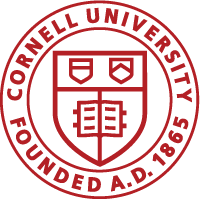Regulation of MutL-Gamma Function in Mediating Crossing over in Mammalian Meiosis
Principal Investigator: Paula Cohen
DESCRIPTION (provided by applicant):
During prophase I of meiosis, crossovers (COs) ensure that parental homologs remain connected until the first meiotic division, when they must segregate equally into two daughter cells. Errors in CO formation and distribution are largely responsible for the very high rates of aneuploidy in humans. COs are initiated by the formation of DNA double strand breaks (DSBs) in early prophase I, but the number of DSBs are in huge excess relative to the final number of COs. In mammals, most COs are generated through the action of the DNA mismatch repair (MMR) pathway, including the MutSγ (MSH4/MSH5) and MutLγ (MLH1/MLH3) heterodimers. Of the 250 DSBs that form, ~150 load with MutSγ in early prophase I, and only ~ 23 of these will load MutLγ later in prophase I to become the final CO sites. The paring down of MutSγ sites which then load MutLγ must be exquisitely regulated to achieve a specific frequency and distribution of COs, and this lies at the heart of “CO designation”. Recently, we identified Cyclin N-terminal Domain-containing-1 (CNTD1) as a critical factor in determining which MutSγ sites load MutLγ, but the mechanism by which CNTD1 achieves the appropriate frequency and distribution of COs across the genome remains unknown. Studies in our current funding period have shown that CNTD1 interacts with components of the Replication Factor C (RFC) Complex. RFC is a general name for one of four RFC variants which are loaders/unloaders of Proliferating Cell Nuclear Antigen (PCNA). The PI’s lab has shown that PCNA is essential for mouse meiosis, and that post-translational modification (PTM) of PCNA on lysine 164 is critical for this activity. However, nothing more is known about how CNTD1, RFC, and PCNA function in concert to achieve CO designation and activation of MutLγ during meiosis. Recently, we have demonstrated that PCNA interacts in vivo with RNF212B, a protein that functions as an ubiquitin E3 ligase in cell culture, and knockout of which recapitulates the meiotic phenotypes of Cntd1 mutant mice. Thus, we hypothesize that CNTD1 regulates MutLγ activity and CO designation through interactions with RFC and PCNA, collectively forming a “MutLγ Activation Cascade”. We further hypothesize that the function of PCNA these events is dependent on the activity of RNF212B. Studies in this renewal application are aimed at elucidating this important regulatory circuit in a stepwise manner. In Aim 1, we will investigate how CNTD1 recruits RFC and PCNA to CO sites. In Aim 2, we will define the unique roles of each RFC variant in regulating PCNA loading/unloading during prophase I. In Aim 3, we will explore the function of PCNA in driving MutLγ activation, testing two alternative models, and we will determine the importance of PTMs of PCNA for these events. In addition, we will ask how RNF212B functions alongside PCNA to drive its activity. These results will establish CNTD1 as a critical upstream regulator of CO designation through its role in recruiting RFC and PCNA to facilitate MutLγ activation at a subset of MutSγ- defined sites, significantly improving our understanding of the etiology of aneuploidy in human gametes.


